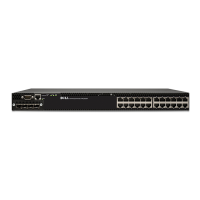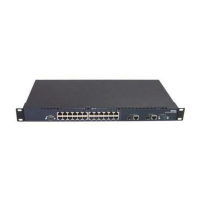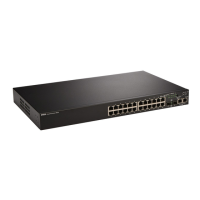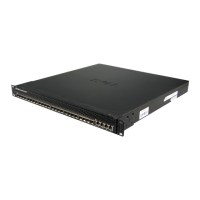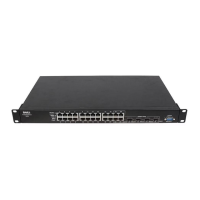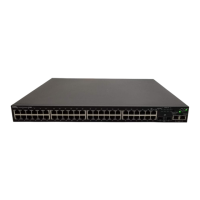BigIron RX Series Configuration Guide 155
53-1002253-01
The IP packet flow
7
The software places an entry from the static ARP table into the ARP cache when the entry’s
interface comes up.
Here is an example of a static ARP entry.
Index IP Address MAC Address Port
1 207.95.6.111 0800.093b.d210 1/1
Each entry lists the information you specified when you created the entry.
To display ARP entries, refer to the following:
• “Displaying the ARP cache” on page 224
• “Displaying the static ARP table” on page 226
To configure other ARP parameters, refer to “IP fragmentation protection” on page 185.
To increase the size of the ARP cache and static ARP table, see the following:
• For dynamic entries, refer to “Displaying and modifying system parameter default settings” on
page 130. The ip-arp parameter controls the ARP cache size.
• For static entries, refer to “Changing the maximum number of entries the static ARP table can
hold” on page 191. The ip-static-arp parameter controls the static ARP table size.
IP Route table
The IP route table contains paths to IP destinations.
The IP route table can receive the paths from the following sources:
• A directly-connected destination, which means there are no router hops to the destination
• A static IP route, which is a user-configured route
• A route learned through RIP
• A route learned through OSPF
• A route learned through BGP4
The IP route table contains the best path to a destination:
• When the software receives paths from more than one of the sources listed above, the
software compares the administrative distance of each path and selects the path with the
lowest administrative distance. The administrative distance is a protocol-independent value
from 1 – 255.
• When the software receives two or more best paths from the same source and the paths have
the same metric (cost), the software can load share traffic among the paths based on Layer 2,
Layer 3 and TCP/UDP information.
Here is an example of an entry in the IP route table.
Each IP route table entry contains the destination’s IP address and subnet mask and the IP
address of the next-hop router interface to the destination. Each entry also indicates the port
attached to the destination or the next-hop to the destination, the route’s IP metric (cost), and the
type. The type indicates how the IP route table received the route.
To display the IP route table, refer to “Displaying the IP route table” on page 228.
Destination NetMask Gateway Port Cost Type
1.1.0.0 255.255.0.0 99.1.1.2 1/1 2 R

